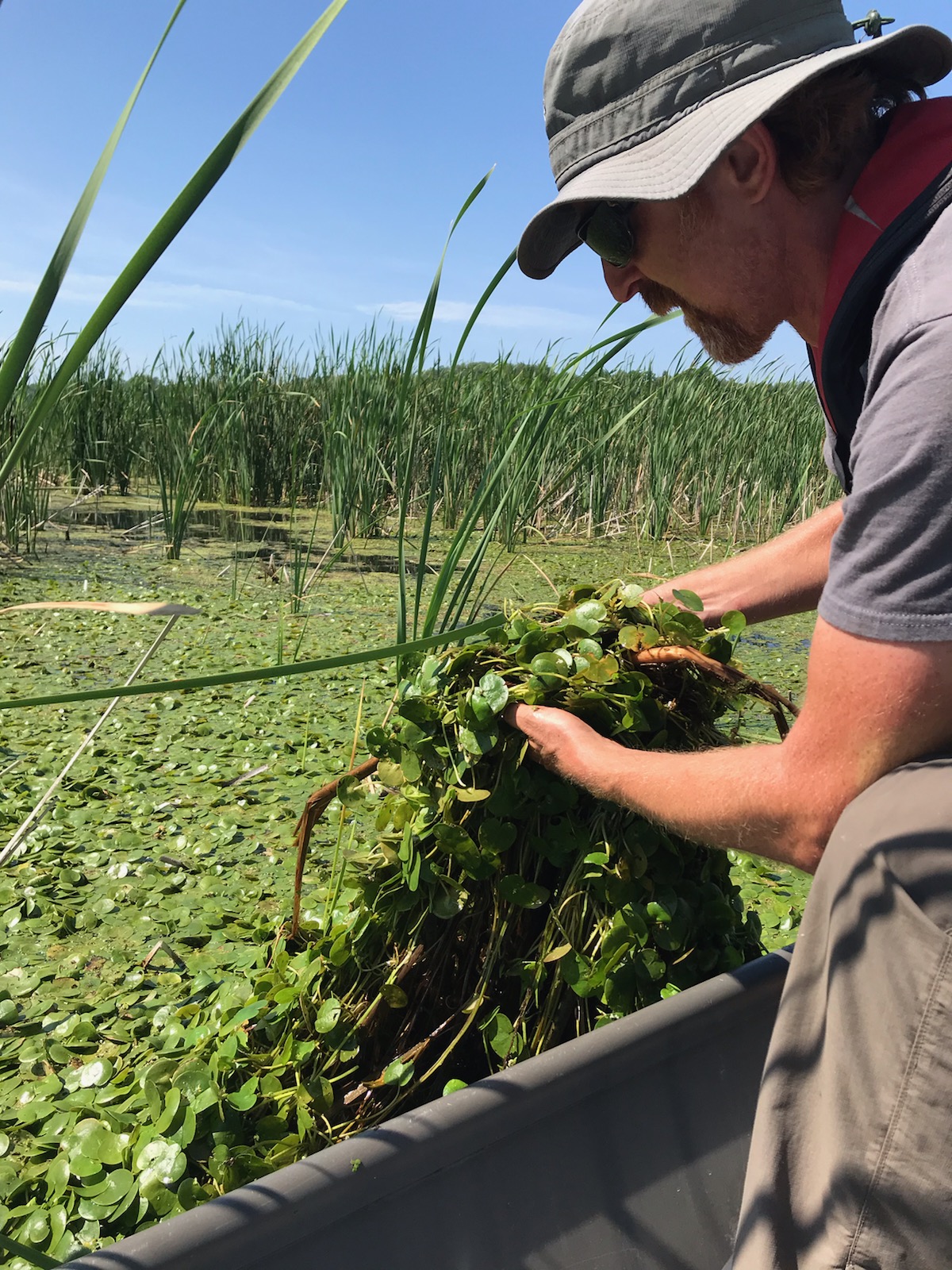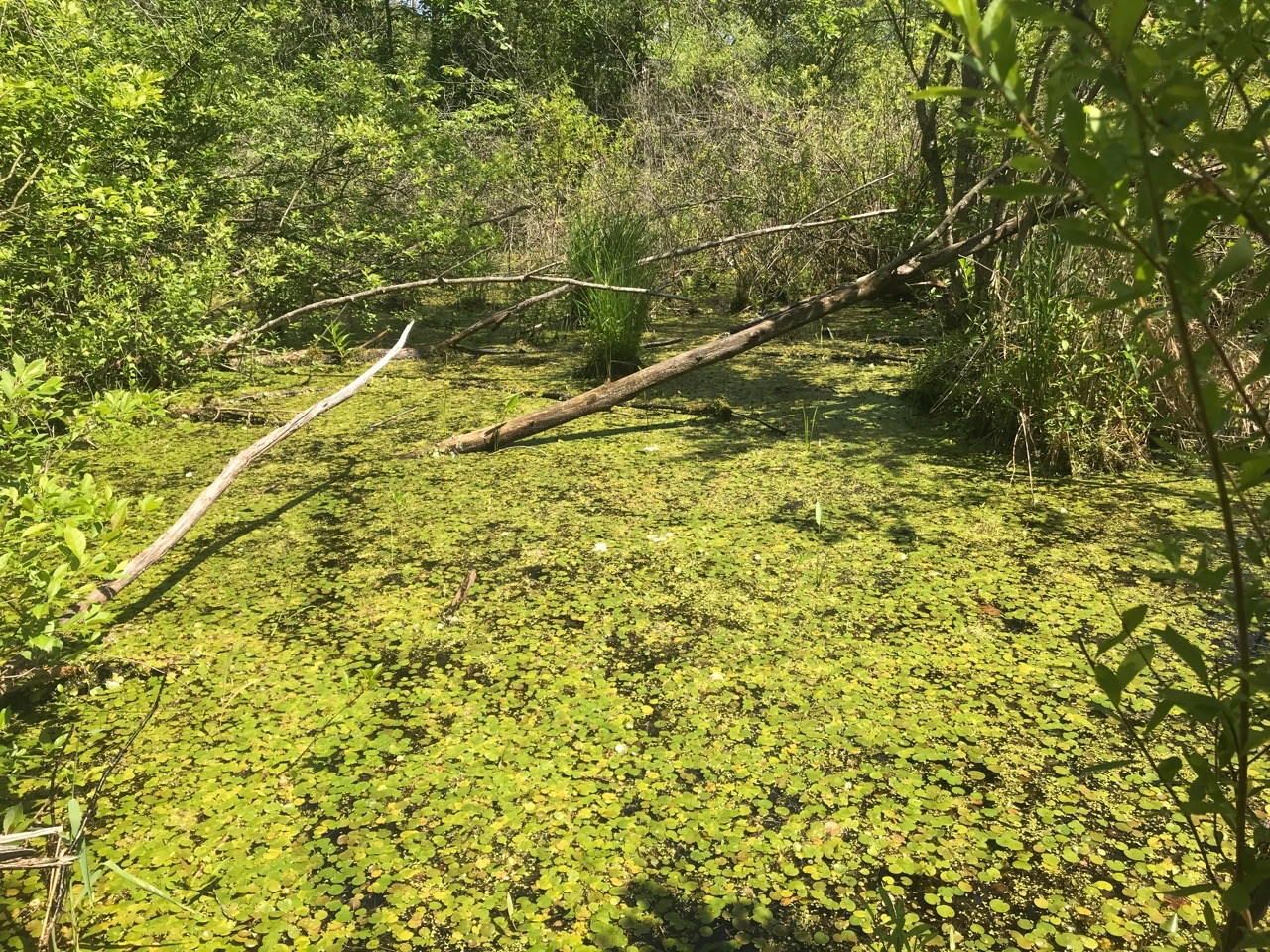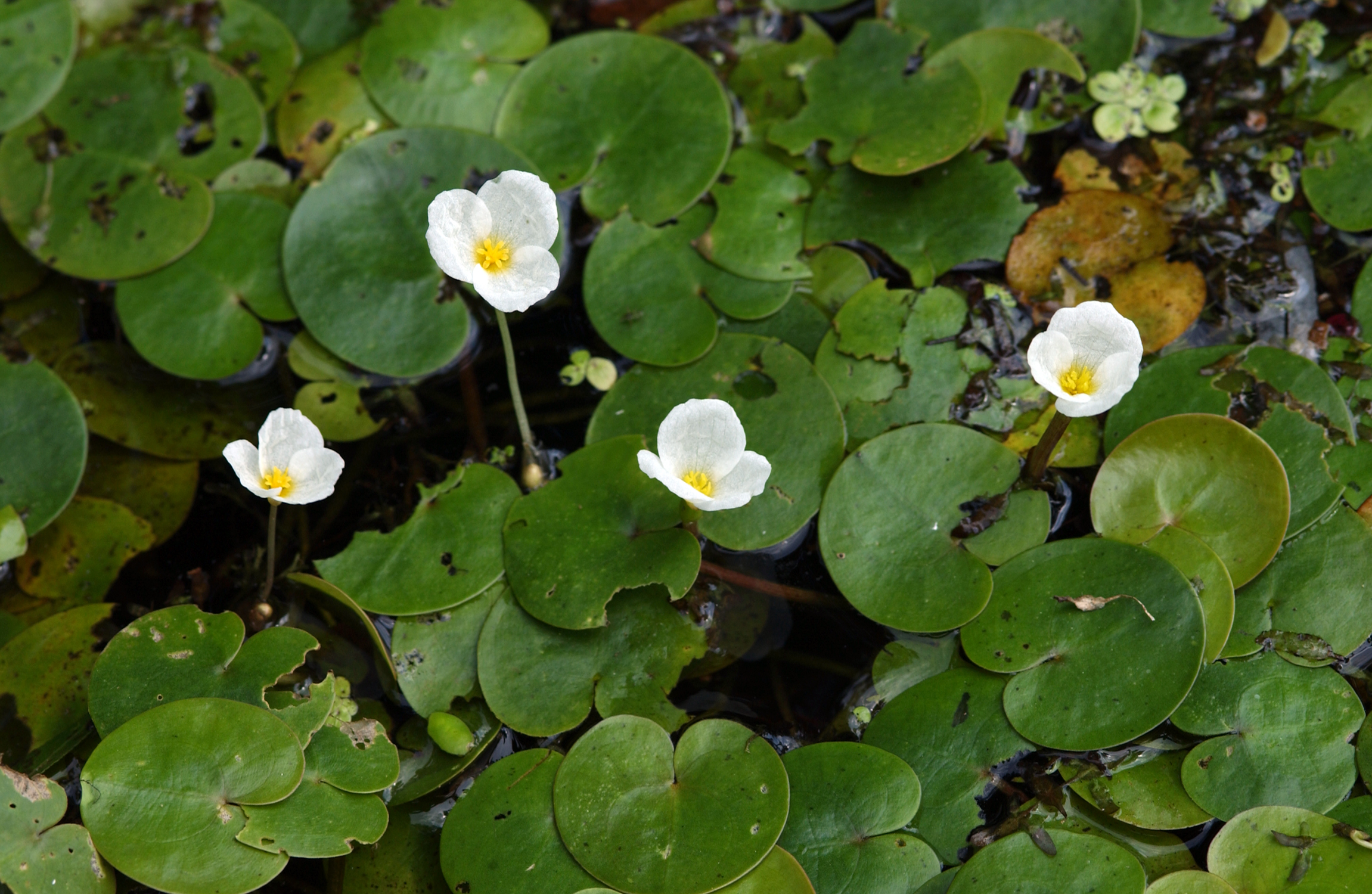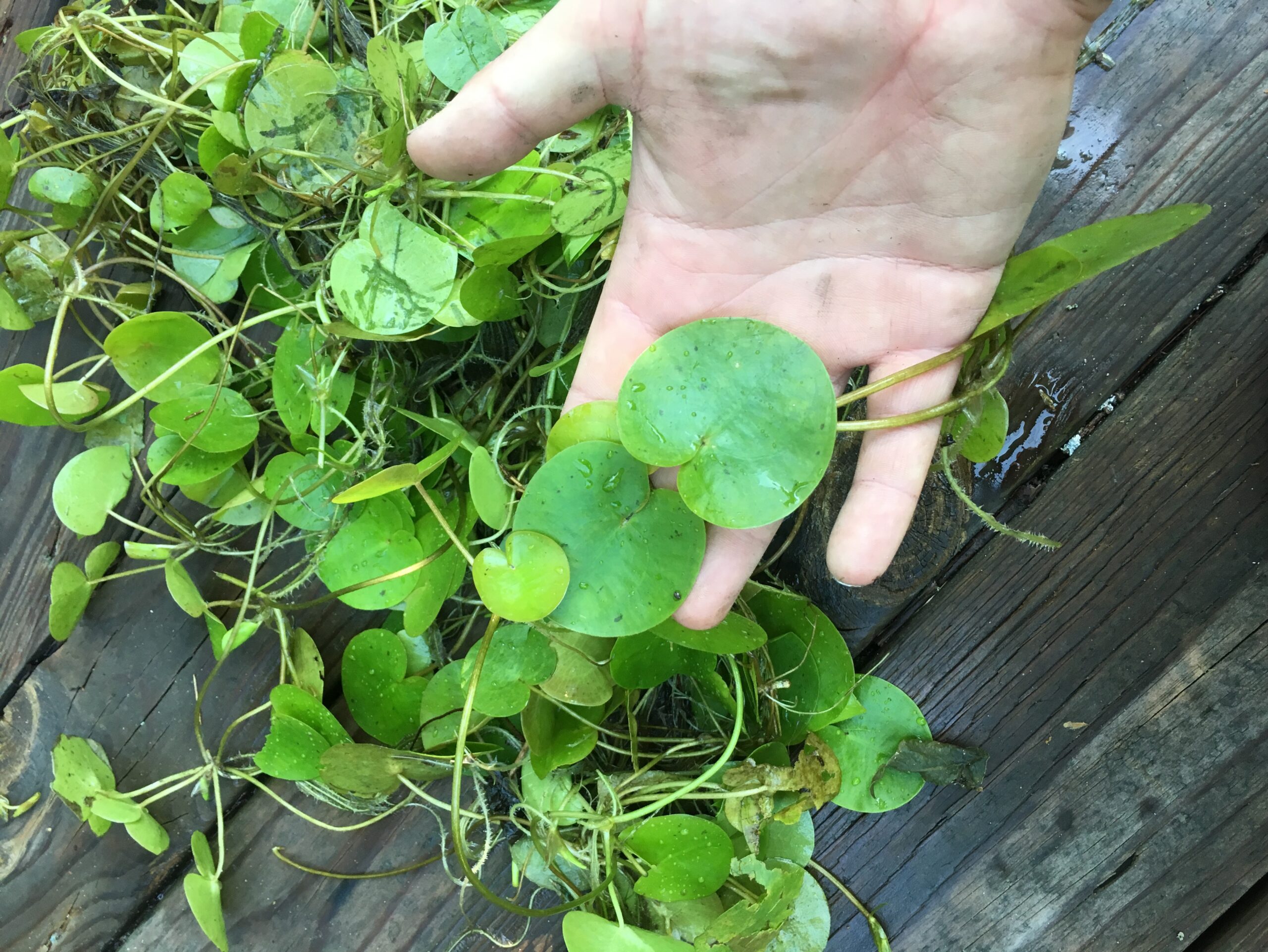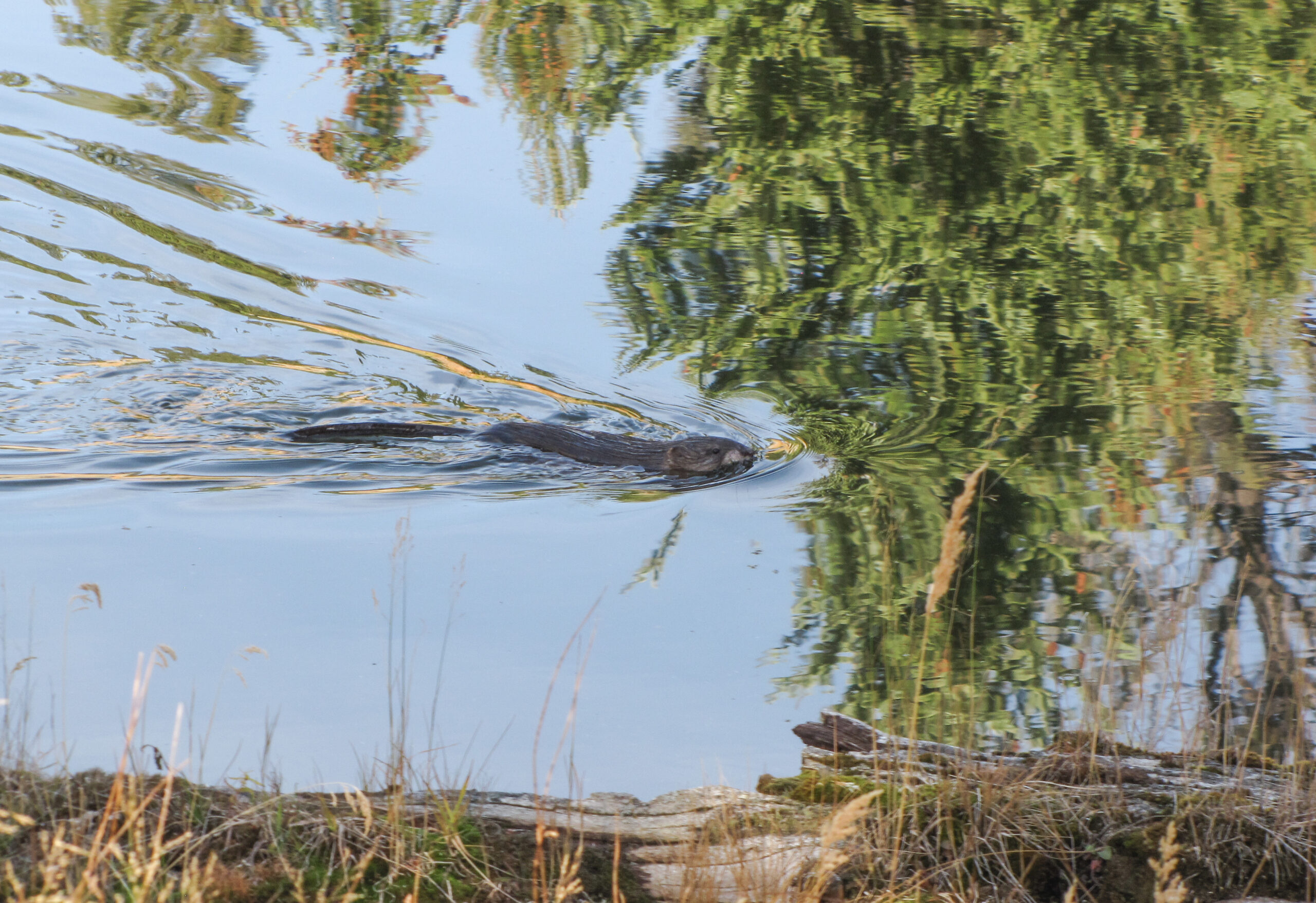MONITORING & MANAGEMENT
European Frog-bit Management
Management of European frog-bit is essential to mitigate harm and ensure this aquatic invasive species does not continue to spread throughout the Great Lakes ecosystem. The European Frog-bit Collaborative has developed resources to aid managers including summarizing information on current management techniques.
Standard Treatment Impact Monitoring Protocol (STIMP)
What is STIMP?
The Standard Treatment Impact Monitoring Protocol (STIMP) records 1) pre- and post-treatment data on EFB over entire treatment and untreated control area, 2) pre-and post-treatment data on EFB from circular plots subjectively located in treatment and untreated control area, and 3) data on the treatment of EFB in treatment areas. It is designed so that data gathered from both treatment and untreated control areas can be used to determine potential treatment impacts to EFB and non-target aquatic plants species, identify control techniques and strategies that need further investigation, provide preliminary data on EFB distribution, reproductive biology and phenology, and habitat requirements, and summarize where, by whom, and how EFB is being managed on the local, state, and basin-wide scales.
How to Access STIMP
The STIMP is currently being housed by the Midwest Invasive Species Information Network (MISIN). Contact MISIN’s data manager to request access: luckachi@msu.edu.
Proper disposal methods
When physically removing EFB, be sure to properly dispose of removed plants. Locate and contact your relevant local, state, or provincial invasive species management organization using this Invasive Species Management Areas Lookup Tool to assist you in understanding proper EFB disposal methods.
Resources & Publications
Twitter Image: Protect Habitat
European Frog-bit Collaborative
Twitter Image: Preserve Habitat
European Frog-bit Collaborative
Standard Treatment Impact Monitoring Protocol
European Frog-bit Collaborative
